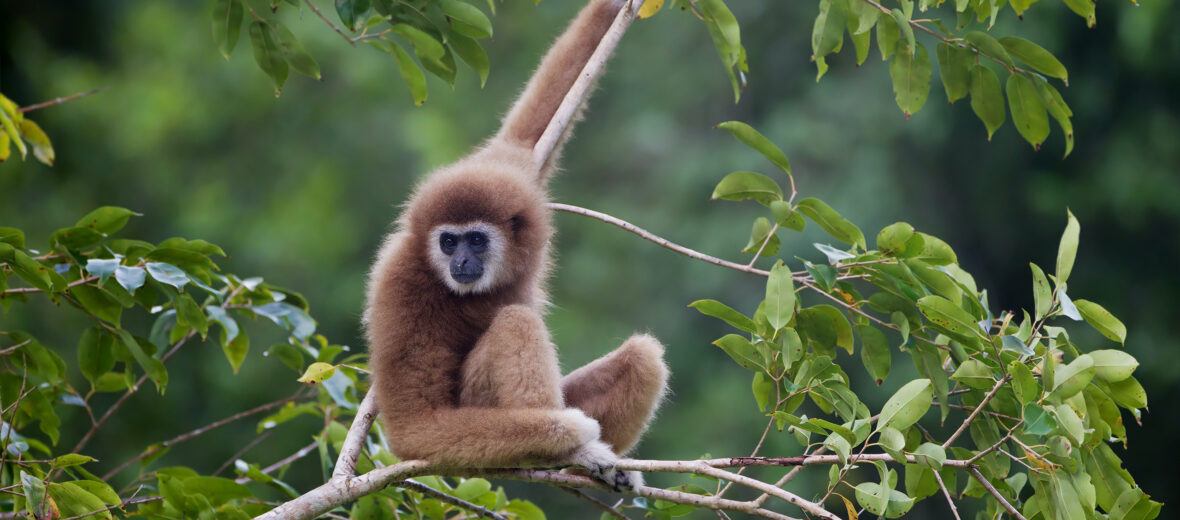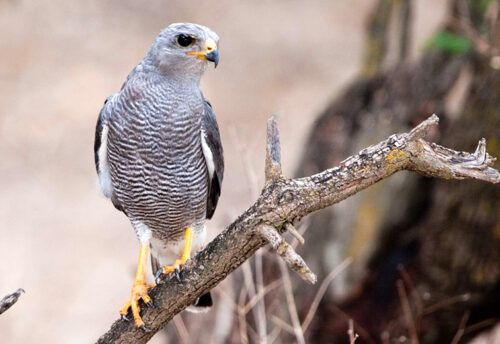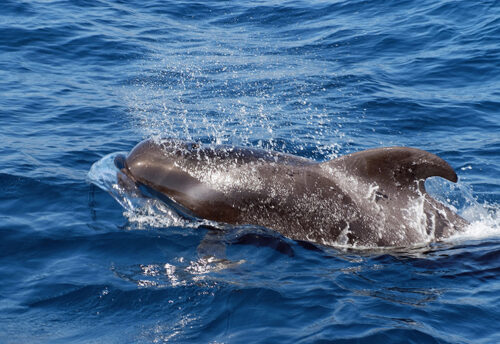
The lar gibbon is an agile primate with amazing climbing and swinging abilities, even though they lack a tail. Traversing trees comes easy to these critters and they make it look like child’s play. They have evolved long hands and arms that aid in their arboreal acrobatics. These primates can even walk on branches with just their hind legs, holding their arms up above their head for balance. Sadly, due to habitat loss and hunting/poaching, these beautiful creatures are listed as Endangered by the IUCN.
First the Stats…
Scientific name: Hylobates lar
Weight: Up to 16 lbs.
Length: Up to 23 inches
Lifespan: Up to 30 years
Now on to the Facts!
1.) Lar gibbons are found mostly in Malaysia, Thailand, and the Sumatran Island of Indonesia.
2.) They prefer to dwell in subtropical and tropical dry and moist broadleaf forests with an abundance of dipterocarpaceae trees.
3.) They are almost totally arboreal (spend most of their life in trees).
4.) These primates are diurnal (active during the day).
5.) Gibbons spend over 15 hours a day sleeping!
But wait, there’s more on the lar gibbon!
6.) Lars are primarily frugivorous (eat mostly fruit) but they will also consume leafy plants, flowers, and insects; making them omnivorores.
7.) They are mostly monogamous (mate for life) but females will sometimes exhibit a polyandrous (mate with several males) behavior.
Did you know…?
Swinging up to 35 mph, they can bridge a gap of up to 50 feet in a single swing! This feat earns them the title of fastest known arboreal mammal that can’t fly.
8.) Females give birth to 1 infant after a 7 – 8 month gestation (pregnancy).
9.) Lar gibbons move via brachiating (swinging from branch to branch) and can cover up to 30 feet, in seconds, while doing so.
10.) These critters are also called white-handed gibbons, due to the light coloration on their hands.
Now a Short Lar Gibbon Video!
Also, check out the Critter Science YouTube channel. Videos added frequently!
Want to suggest a critter for me to write about? Let me know here.



